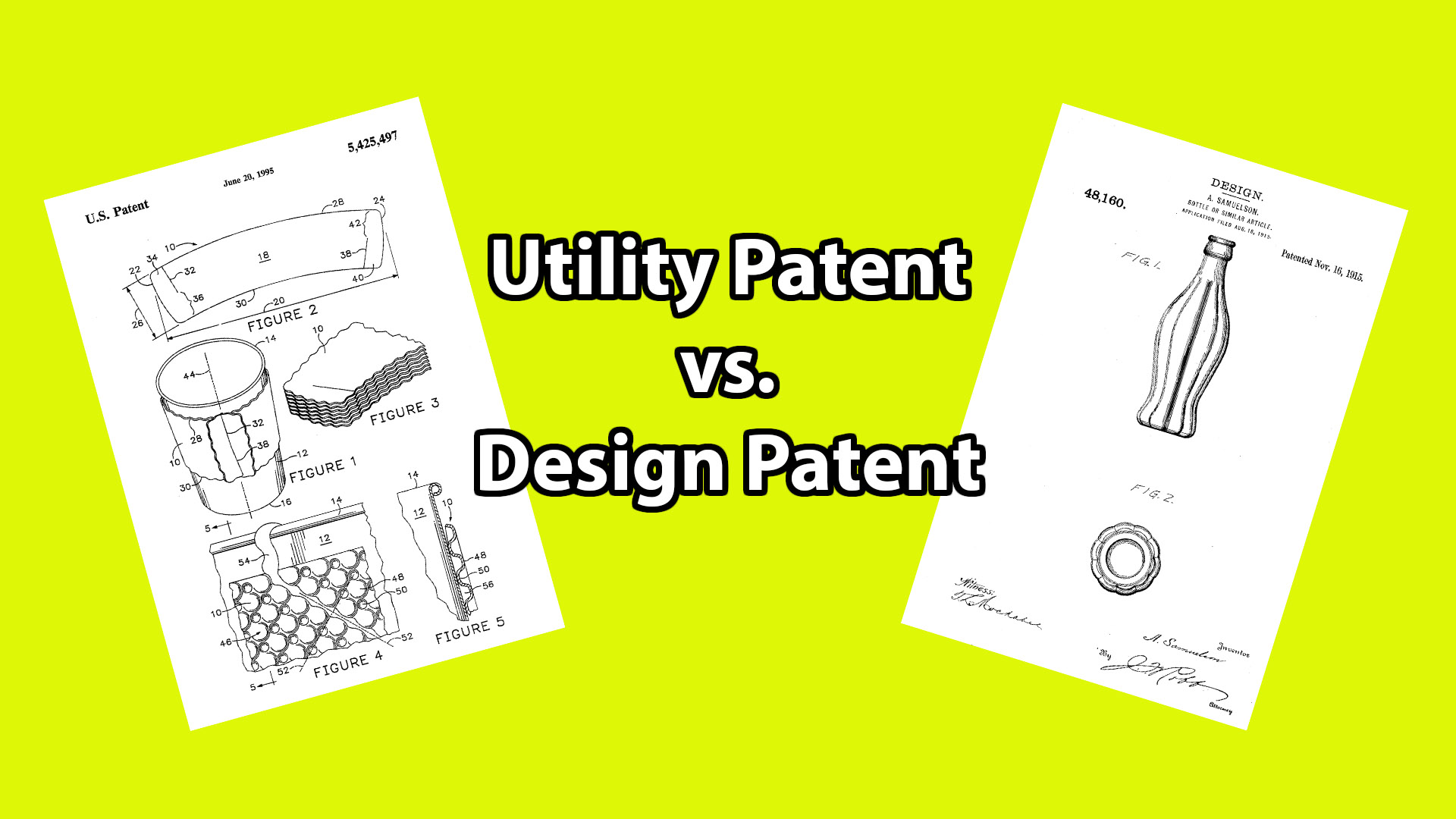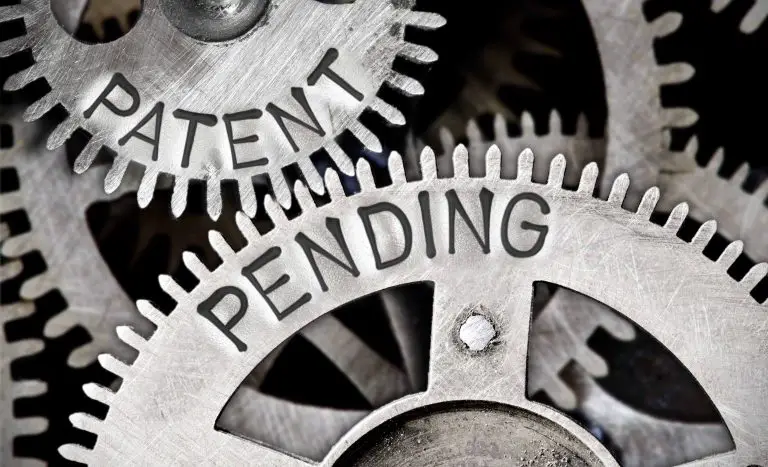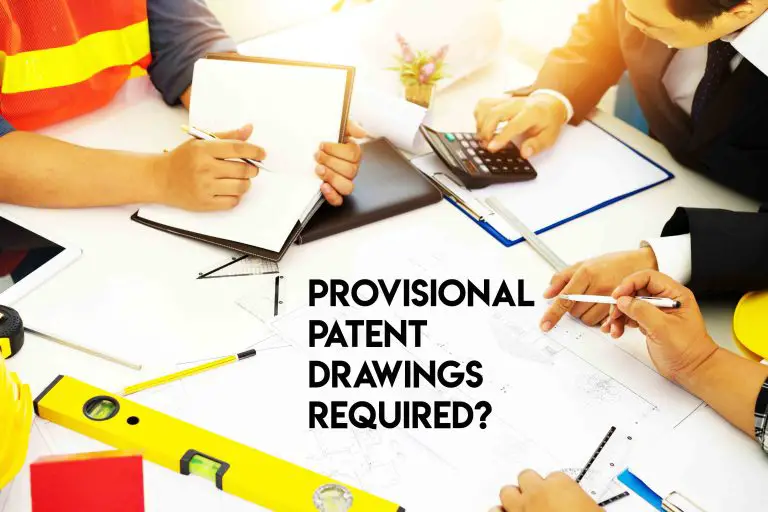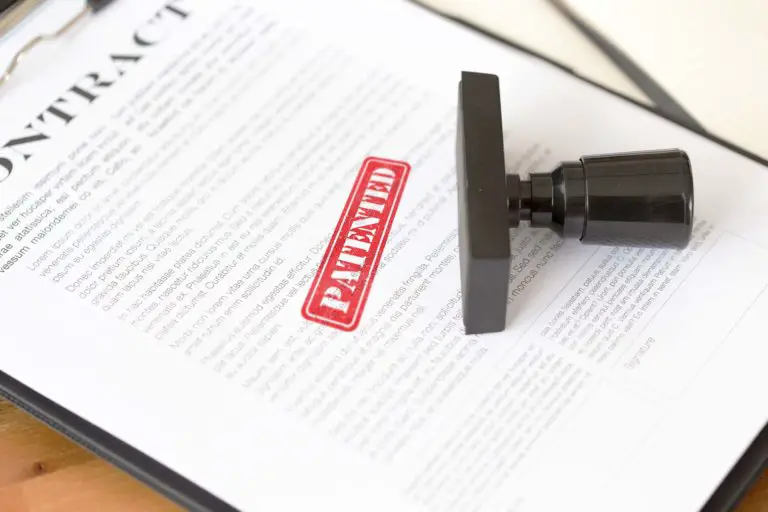How to Tell if a Patent is Utility or Design Patent?
How to Tell if a Patent is Utility or Design Patent?
Whether you’re performing a patent search or you’re just curious about how to tell the difference between a utility patent and a design patent, you’ve come to the right place. You can tell if a patent is a utility or design patent by looking at the patent number. If the patent number starts with a “D,” (ex. D91823) then it is a design patent, if the patent number is only comprised of numbers (ex. 8,029,027), then it is a utility patent. The USPTO (United States Patent and Trademark Office) typically publishes granted patents and pending nonprovisional patent applications that have been pending for more than 18 months.
You can also tell the difference between a utility patent and a design patent by looking at the top left portion of a granted patent. If you’re looking at a utility patent, you will only see the words “United States Patent.” If you’re looking at a design patent, it will state “United States Design Patent.” With some older patents, you might not see this designation, but for newer ones, you will see it.
Hopefully, at this point, you will be able to tell the difference between a design patent and a utility patent. If you can’t, here are some examples of a utility patent vs. a design patent. We have circled the differences between the two.
Example of a Utility Patent vs Design Patent
Utility Patent Example
Here is an example of a utility patent, as you can see the patent number is only made of numbers, so the patent is a design patent.

Design Patent Example
Here is an example of a design patent. As you can see, the patent number starts with the letter “D” indicating that it’s a design patent.

Utility Patent vs. Design Patent
A utility patent protects how an invention works, as well as how an invention can be used. Utility patents last for 20 years from the date an applicant files his patent application with the patent office.
Utility patents, on the other hand, protect how an invention looks, as well as the aesthetics or appearance of an object. Design patents last for 15 years from the date the patent office grants a design patent application.
Some inventions qualify for both a utility patent and a design patent. However, if an inventor wants to protect his invention with both a utility patent and a design patent, he must file two separate patent applications with the patent office: a utility patent to protect the functional aspects of the invention and a design patent to protect the appearance of the invention.
Design patents are often granted without receiving a rejection from the patent office, utility patents are often initially rejected and an applicant has to reply to the rejection to patent his invention.
It typically takes the patent office 24 months to either approve or deny a utility patent application unless an applicant applies for expedited review. For design patents, it typically takes the patent office 14 months to either approve or deny a design patent application. Most design patents are approved, whereas only 52% of utility patent applications are approved.
That said, design patents cost way less than utility patents. For example, patenting a simple invention could cost anywhere from $7,500 to $15,000+, whereas patenting a design typically costs $3,500. The difference in cost is because utility patent applications require a lot of an attorney’s time to prepare, leading to a higher cost.
Are Utility Patents Worth It?
Utility patents are definitely worth it if you have an invention that’s worth protecting. If you have an invention that you can profit from selling or licensing, you should definitely consider protecting with a utility patent. Just as a reminder, utility patents protect how an invention is made and how it works.
Obtaining a utility patent over your invention will allow you to control who can use, making, sell, and import your invention to the U.S. This allows your to curb competitors who may seek to copy your product and sell their own version of it. Since utility patents protect how your product works, if a competitor makes a product that looks different but functions the same, you will be able to stop them from copying it and selling it.
Note: It is not the patent office’s job to police your patent. It is the patent holder’s job to look for infringers and asking them to stop using, making, or selling the patented invention for a limited period of time (20 years for utility patents). If you ask an infringer to stop his infringing use and they don’t stop, you can bring a lawsuit against them in federal court to stop them from using or selling your invention.
Are Design Patents Worth It?
Design patents are worth it if your invention has a unique look that makes your product sell. Said differently, if the look of your product is what attracts customers to it, you should definitely prepare and file a design patent application to protect your design.
Patenting your design will allow you to control who can make, use, and sell a product that has a similar design to the one that you’ve patented. So, if you have competitors who you think may copy the design of your product, you should consider protecting your design with a design patent.
This way if someone uses your design on their product, you can ask them to stop copying your design. If they don’t stop using it, you can sue them in federal court for design patent infringement. If your suite is successful, the court will likely issue a court order, demanding that the infringer stop using your design. You may also be able to obtain monetary damages for any losses that you sustained as a result of the infringing use of your design.
Obtaining Both a Design and Utility Patents
Some inventions may qualify for both a design patent and a utility patent. However, you can’t just file one application to obtain both types of protection. To obtain both forms of protection, you will have to file a utility patent application, as well as a design patent application. You can link the two applications by referencing the application to each other.
Having both utility protection and design protection makes your product much more valuable since it qualified for both types of protection. This makes licensing the invention and selling it much easier since the person purchasing or licensing the product will know the scope of the invention he’s purchasing or licensing.
Summary of the Benefits of a Utility Patent
- Protects how your product or invention works
- Ability to prevent others from using, making, and selling your invention for 20 years from your filing date
- Allows the inventor to exclusively make and sell the patented product or invention
Summary of the Benefits of a Design Patent
- Protects the appearance of your invention
- Protects the unique design of your invention
- Ability to prevents others from copying and selling your design
- Ability to profit from the unique appearance of your product
Types of Patents
The USPTO offers three main types of patents: utility patents, design patents, and plant patents. As we explained earlier, utility patents protect how an invention works, design patents protect how an invention looks, and plant patents protect certain species of plants.
Utility patents are the most applied for patent, making up more than 93% of all applied for patents. Design patents, on the other hand, make up 6% of applied for patents, with plant patents making up less than 1% of applied for patents.
To obtain a utility patent an inventor must show that his invention is novel (new), nonobvious, and useful. Once an inventor has such an invention, he can patent it by preparing a utility patent application and filing it with the patent office.
Obtaining a design patent is somewhat similar, an inventor must have a new and unique design and the design has to be nonobvious. To patent a design, the design cannot be functional, it has to be purely ornamental.
The patent office also offers plant patents for those who invent or discover new species of plants. To obtain a plant patent, the inventor must be able to asexually reproduce the plant. Approximately 1200 plant patent applications are filed each year. You can tell a patent is a plant patent by looking at the patent number, for plant patents, the patent number is usually preceded by the letters “PP,” (ex. PP 45,174).
How to Tell if a Patent is a Design or Utility Patent?
By now, you should be able to distinguish the difference between a utility patent and a design patent. Utility patents are titled “United States Patent” while design patents are titled “Design Patent.” If you can’t tell the difference yet, you can do so by looking at the patent number. Design patent numbers usually start with a “D” (ex. D 45,683), while utility patents numbers are only numerical (ex. 8,403,034). We also included a design patent and a utility patent to illustrate how to tell if a patent is a utility or design patent. That said, if you have any general questions or comments, please feel free to leave them in the comments section below.







